
Hall in Tirol – http://www.hall-wattens.at/en/
The old town of Hall is one of the world’s largest preserved ensemble of historical buildings and the largest in Western Austria.. It is situated in the Inn valley, about 5 km (3 mi) east of Innsbruck.
The name of Hall originates from “hal” which was the old German word for salt. The town is situated at 574 m above sea level and covers an area of 5.54 km2. Its population is 12,517 habitants (1 January 2010) .
History
Hall in the County of Tyrol was first mentioned as a salina (saltern) near Thaur castle in a 1232 deed. The current name dates back to 1256, similar to Halle, Schwäbisch Hall or Hallstatt referring to the Celtic word for salt. In 1303 Hall became a town and in 1477 it got the right to mint coins.
Since the 13th century the salt mine at Absam in the Hall Valley north of the town formed the main industry of the town and its surroundings. The first adit was laid out in 1272 at the behest of Count Meinhard II of Tyrol, with the brine led by a 10 km (6 mi) long pipeline to the evaporation pond at Hall. The importance of the salt is also displayed in the coat of arms showing two lions holding a cask of salt. The salt was exported to Switzerland and some regions in Germany.
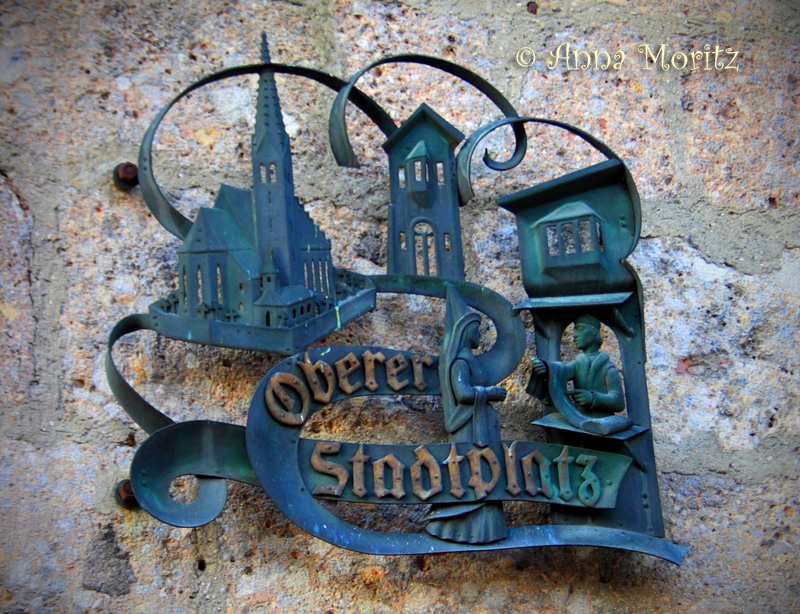
The “Oberer Stadtplatz” is the living heart of the old town. It’s where you can find all the Christmas, Easter and Farmers markets. The main street leading to it is the “Langer Graben“, and you can see on Sundays locals dressed in traditional costumes or tourists with cameras on their way up.

The locals love their traditionnal costumes (“called Tracht”) and use every occasion to wear them. Wherever on Sundays , after the church, on fests or celebrations, you can admire the ladies wearing beautiful and colorful dresses with silk aprons and the men their well known knee long leather pants and white knitted socks.
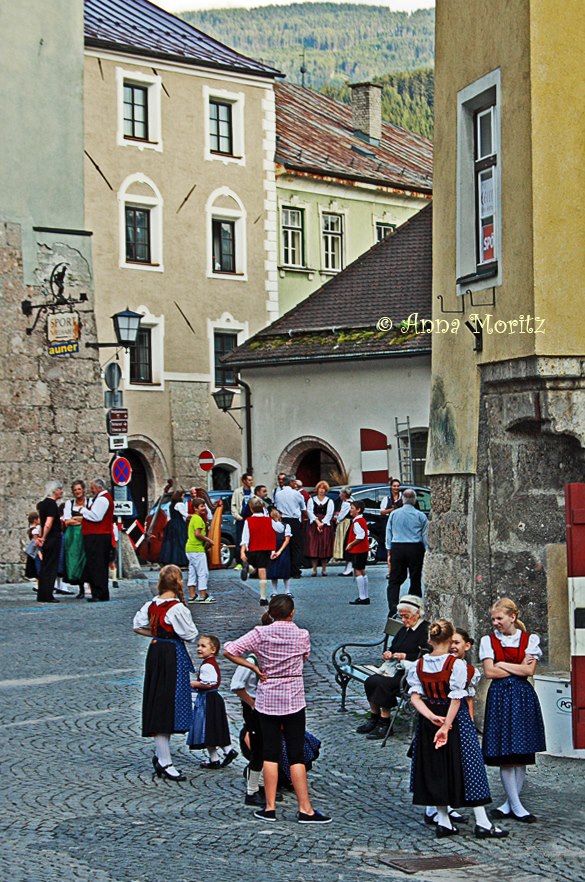
History of Hall
In the year 1400, Hall had about 3 000 inhabitants. The people were deeply religious and the money was abundant, so many churches were built. Skilled builders, craftsmen and painters created unique works in Hall and its surroundings . Churches, chapels and monasteries are still to be admired today.
In the west side of the main town square is the parish church St. Nicholas .
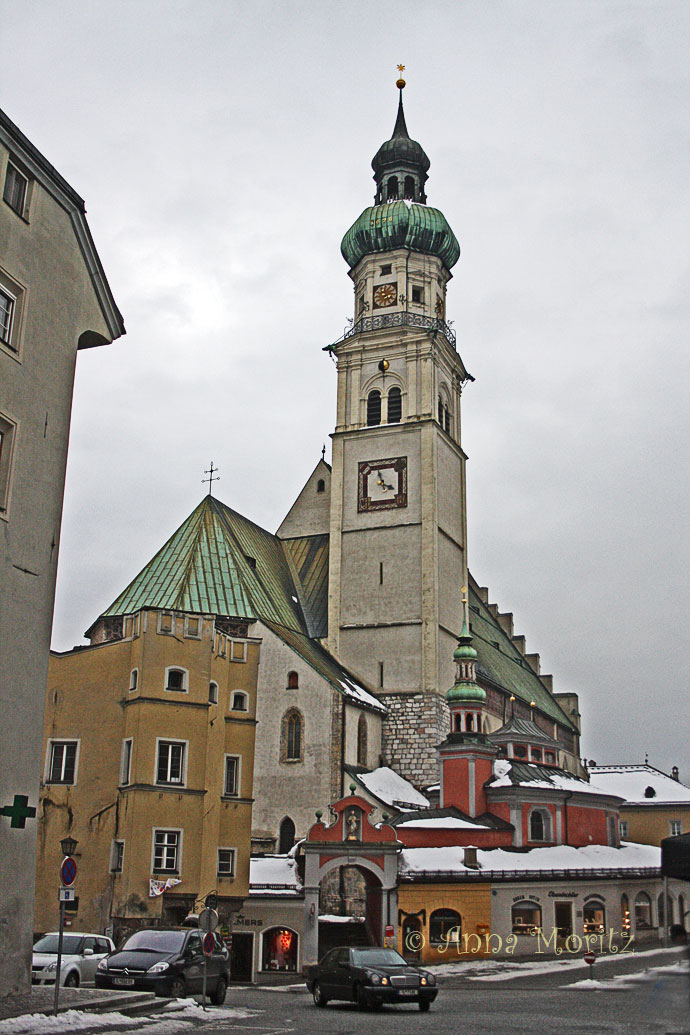
The ground stone for the church, consecrated to Saint Nicholas, the patron saint of sailors, was layed in 1281, for the building of a chapel.
Between the years 1420 and 1440 the church was expanded from a one nave to three nave building by the builder Hans Sewer from Hall .The church has been enlarged twice and finally completed in late-Gothic style. Because the building couldn’t be extended south and the old choir was to remain in the same place the Presbytery is heading to the right. Something I have NEVER seen before.
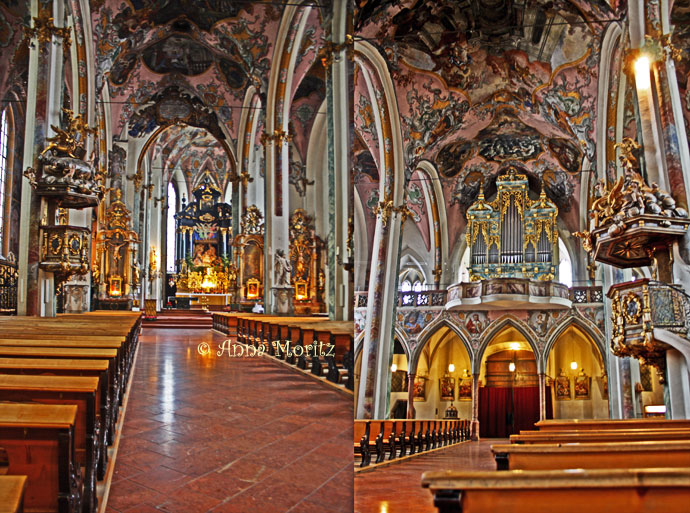
In 1670 a strong earthquake caused the original pointed Gothic tower built in 1345 to tumble along with the night watchman. It was replaced by a Baroque onion dome, and the interior of the church was later given a Baroque turn. The Baroque frescoes were created by Adam Mölk ( 1752) .The St.Nicholaus church can be admired as 3D model in goggle earth map.
In the nothern aisle can be found the Waldhauf Chapel, consecrated in 1505. Sir Florian Waldhauf von Waldenstein was a Tyrolan knight ,confidant and advisor of emperor Maximilan I. When his ship was saved from a storm he decided to give the enormous collection of relicts he had gathered on his travels to the Parish church. A small part has been preserved till today. The Waldauf Madonna that adorns the altar stems from Michael Pacher’s school.
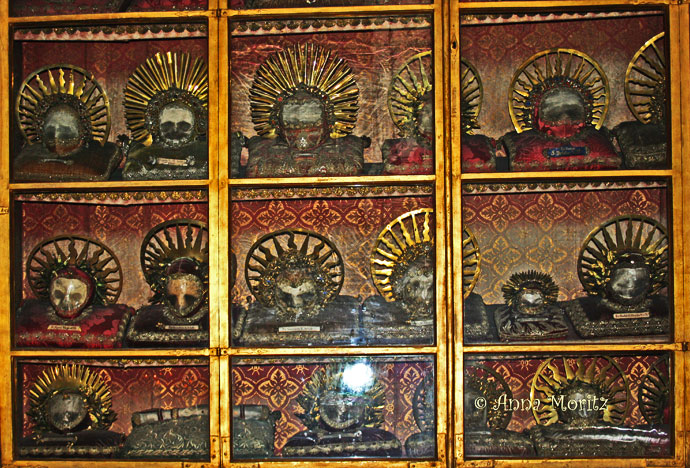
At the back of the parish church is St. Magdalen’s Chapel, that was first mentionned in documents in 1330. The double chapel decorated with frescoes is used as a War Memorial Chapel. Not to be missed are the late-Gothic winged altar (second half of 15 century) and frescoes from three centuries ( 1410 – 1610 ). It’s usually closed for visitors.
The St.Nicolas church yard offers great backgrounds for photo shooting (along with the rest of the old town actually). You can’t go wrong with the chapel’s doors, old tombstones or stone walls with majestic mountain ridges in the background.
There was actually a wedding photoshooting , by the time I walked by…They were speaking italian. It was saturday afternoon – the time when everybody gets married. I wanted to stop on our way to another church where there was a wedding, but I still got my bride this day. The church itself was closed for visits, someone was playing the organ inside.
The Tombstones build in the outside of the church walls date most from the 17 century and are full of symbols among which the Eye of Providence , saints, angels, skulls, coats of arms and names of nobles (top right is one of a countess – Grafin in German). I have been wondering – if these are the tombstones – where are the bodies or urns?
Next to the church is the Town hall of Hall proudly bearing the colorful coats of arms of the city and its rulers. The short-term King of Bohemia , Count Heinrich von Görz-Tirol (1295-1335) , called his “town castle” the “Royal Palace”.
Habsburg Duke Leopold IV gave the building to the town in 1406. Since then it has been used as Town Hall. The great fire of 1447 caused big damages and the town hall had to be rebuilt. The Council Chamber dating from 1451 is not only used for meetings of the council, but is also a popular and loved wedding location.

The Minister of Science and Research, Dr. Hans Fischer has given the municipality of Hall the first Austrian prize for monument preservation for the excellent renovation of the old town . It was awarded to the town mayor Dr Joseph Posch in an official celebration on the 12 october 1984.
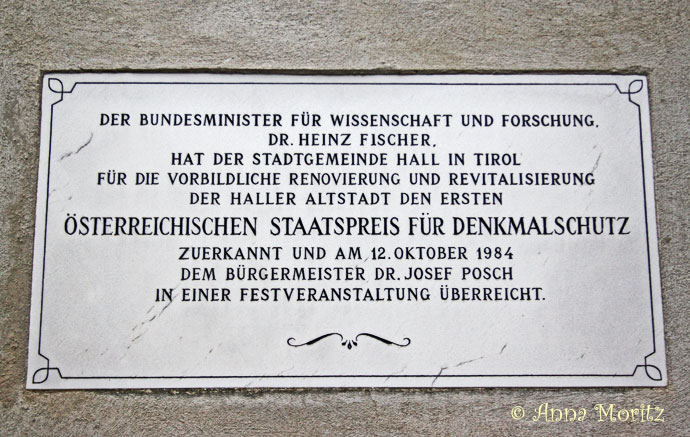
The lady with the moon and stars can be seen above the entrance of the church of the Sacred Heart convent (left) with a sword and child as head statue (right) on top of the main city sqare fountain.
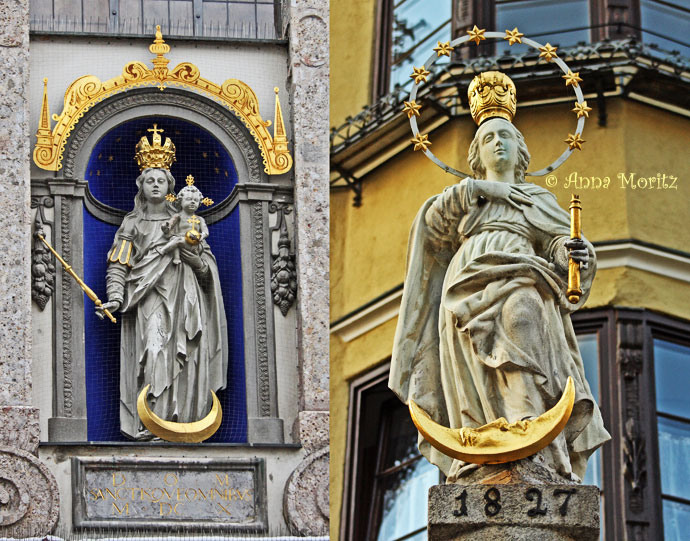
Out of this fountain, on the 2nd of september 2011, there was wine flowing for the town celebration .

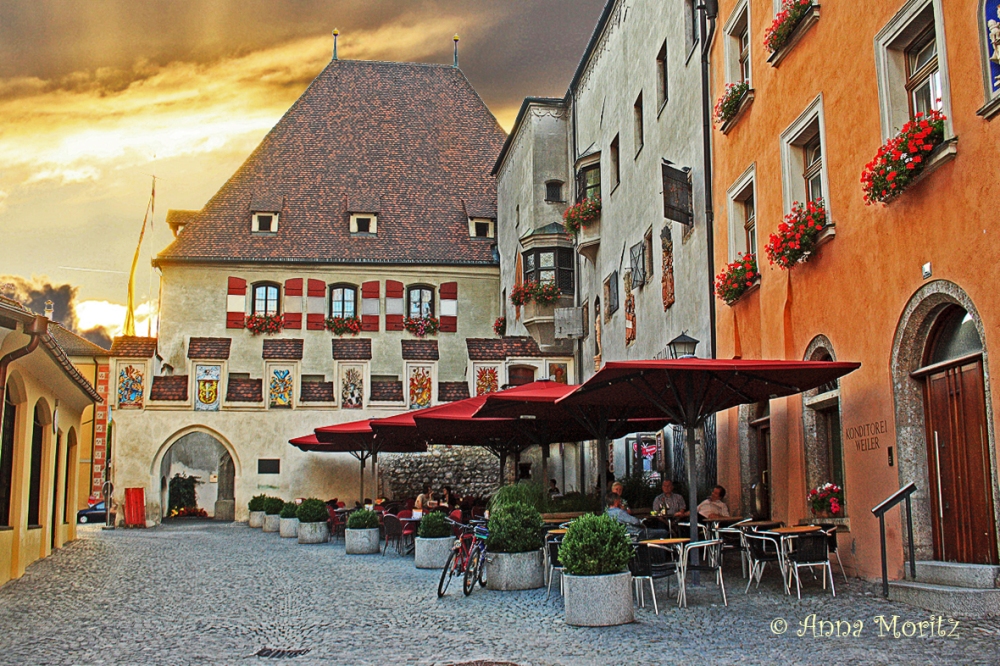

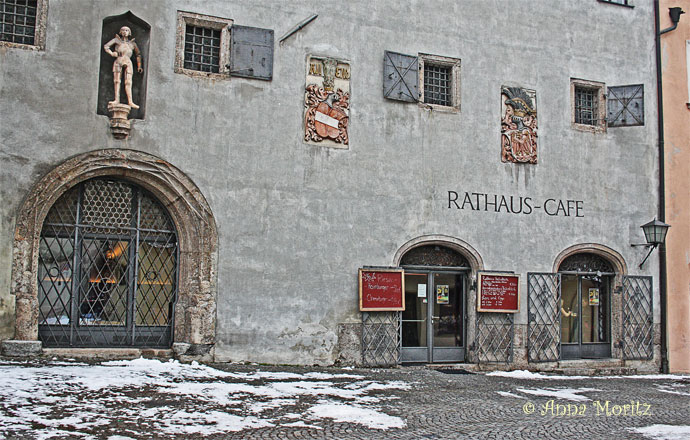
At the opposite part of the town square, is the ancient Gasthouse “The Golden Lion” with the excellent local restaurant and http://www.dianabar.at/. Don’t hesitate to take a look at their homepage – it has been created with lot of taste and love. Unfortunately it’s only in German, so I would like to translate the opening words for you…
” Once upon a time, when there were still Princes and Princesses there was a little Restaurant & Guest house, where people ate, drank, danced and celebrated great moments. But terrible wars came upon this Land and the little Restaurant & Guest house was forgotten. It fell into a deep long sleep. One day a young man came across and felt compassion for the little Restaurant & Guest house. It was cleaned and well groomed and shone with its old beauty. The doors opened and the little Restaurant & Guest house got filled with life…”

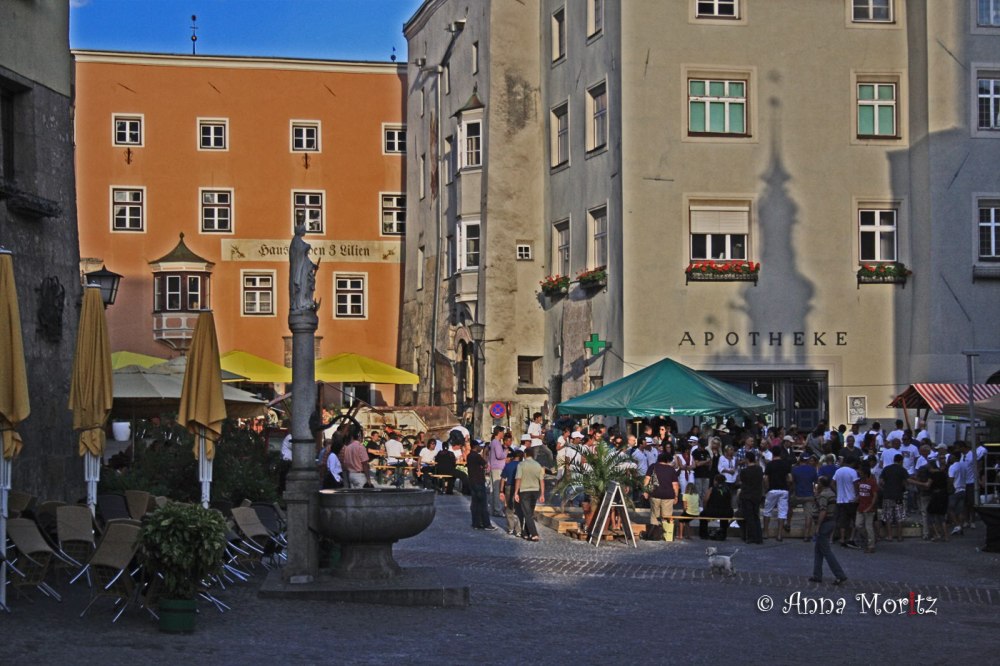
The Easter market in Hall in Tirol takes place only on two days – Friday and Saturday, a week before Easter. Compared to the one in Innsbruck , which is there every day from 30 March to 09 April 2012. There is a kids craft and drawing corner, kids makeup, an exhibition of painted Easter eggs, a brass band playing music in front of the fountain… simply beautiful!
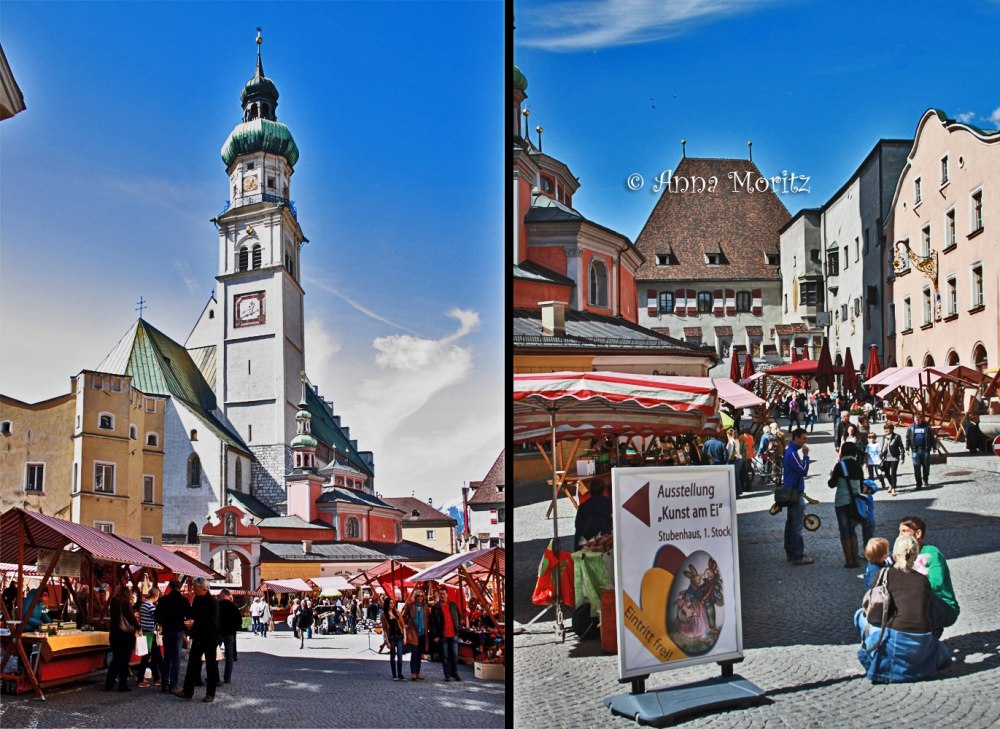
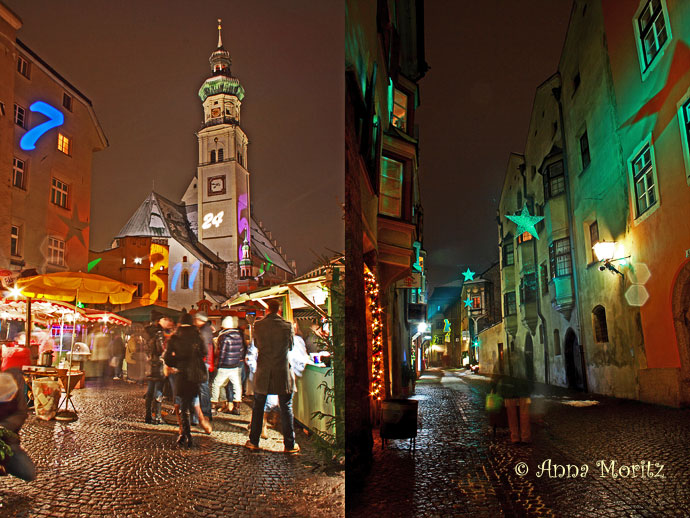
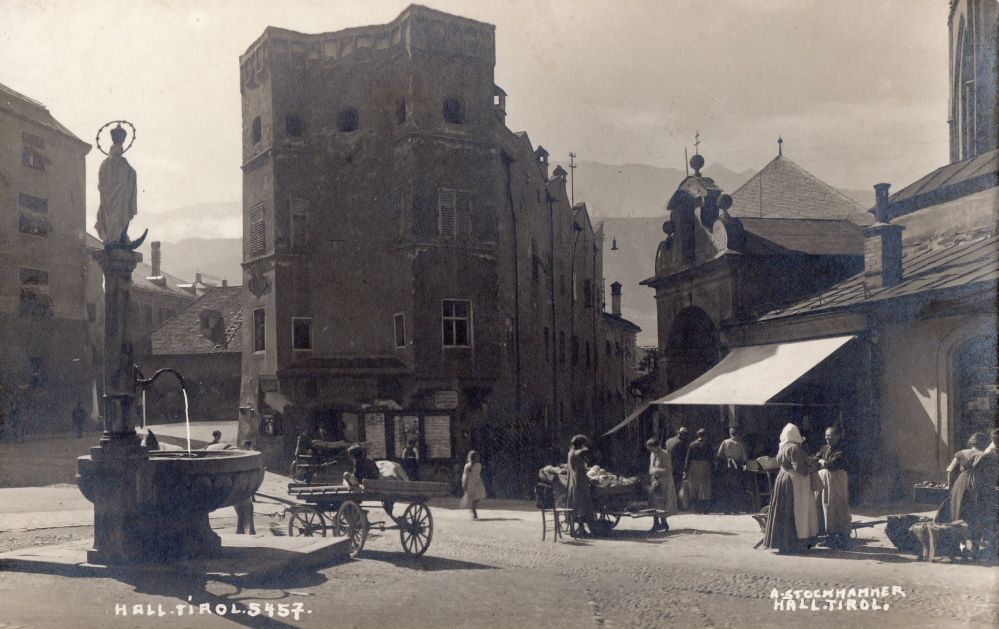
I bought this photo as a postcard at the flea market in Völs. There is a guy ,selling such cards, organized per region. It was difficult to pick just one, there were so many, not particularly cheap either.I picked this one, because I know the corner very well. It looks almost the same now, about 100 years after. Except the carriage. There are still farmers markets.
I decided to split my Hall in Tirol post into several smaller ones. It was just too long.

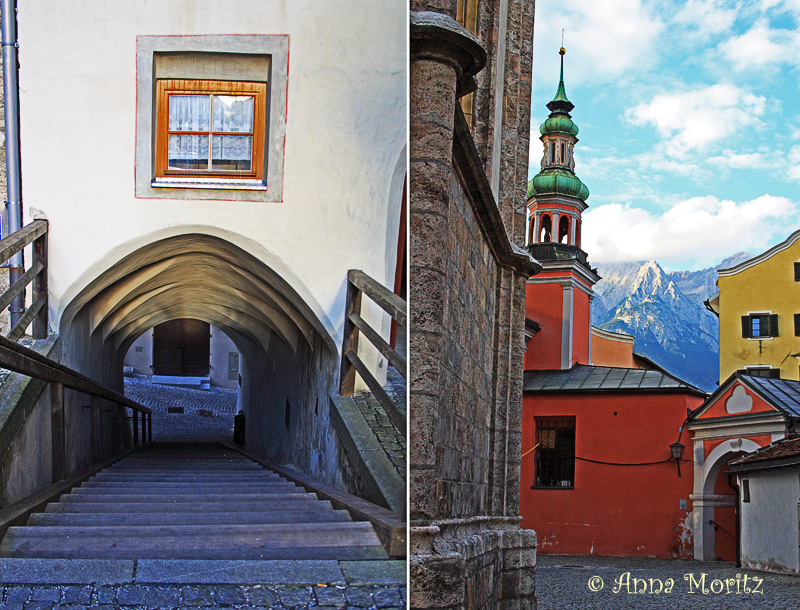
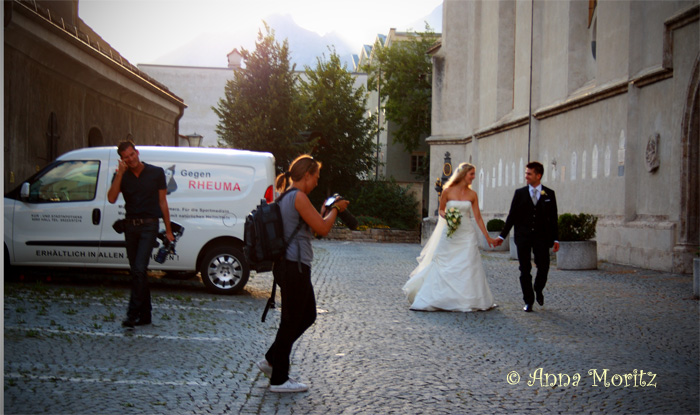
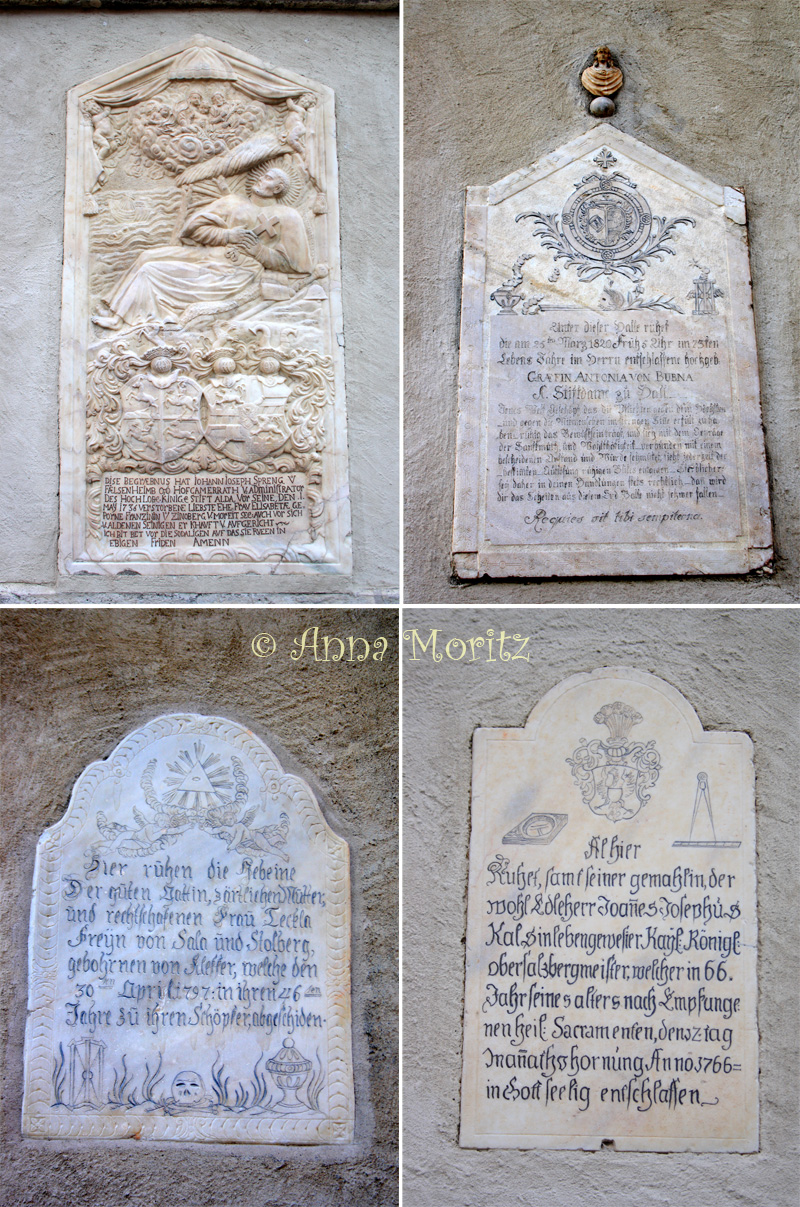
какво красиво място… rathaus cafe снимката и прозореца с гълъбите са страхотни!!:))
Мерси много 🙂 Трябва да оправя снимките в този пост . Писала съм го когато блогът имаше друг темплейт и поддържаше по-малка резолюция снимки …Bigger is better 😀